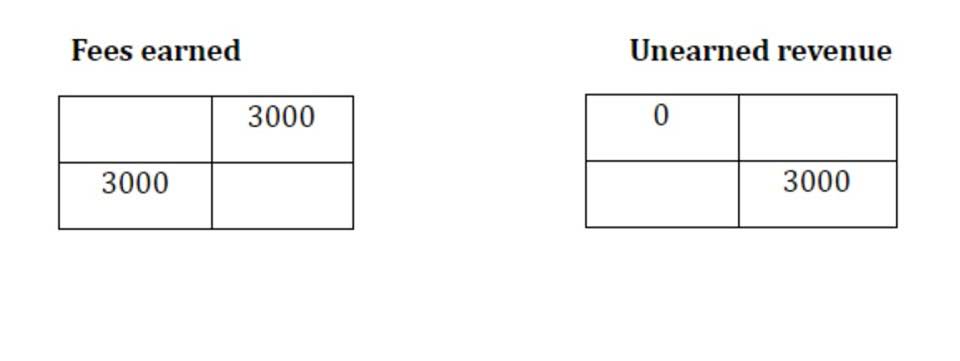
Also, mistakes corrected in the same year they occur are not prior period adjustments. Retained earnings are a clearer indicator of financial health than a company’s profits because you can have a positive net income but once dividends are paid out, retained earnings a debit or credit you have a negative cash flow. The higher the retained earnings of a company, the stronger sign of its financial health. The beginning period retained earnings appear on the previous year’s balance sheet under the shareholder’s equity section.

Unit 14: Stockholders’ Equity, Earnings and Dividends

In the next accounting cycle, the RE ending balance from the previous accounting period will now become the retained earnings beginning balance. The income summary is a temporary account used to summarize revenues and expenses for the specific purpose of closing out accounts at the end of a financial period. In contrast, the income statement is a detailed financial statement that reports a company’s total revenues, expenses, and net income https://www.bookstime.com/articles/retail-accounting or loss over a specific period. In terms of financial statements, you can find your retained earnings account (sometimes called Member Capital) on your balance sheet in the equity section, alongside shareholders’ equity. In rare cases, companies include retained earnings on their income statements. The income summary account does not have a normal balance because it is a temporary account used to summarize revenues and expenses.
What Is the Difference Between Retained Earnings and Dividends?

Since you’re thinking of keeping that money for reinvestment in the business, you forego a cash dividend and decide to issue a 5% stock dividend instead. Calculating retained earnings after a stock dividend involves a few extra steps to figure out the actual amount of dividends you’ll be distributing. Yes, retained earnings carry over to the next year if they have not been used up by the company from paying down debt or investing back in the company. Beginning retained earnings are then included on the balance sheet for the following year. At the end of the period, you can calculate your final Retained Earnings balance for the balance sheet by taking the beginning period, adding any net income or net loss, and subtracting any dividends.
- This serves as an excellent way for businesses to keep their financial records organized and start fresh each year.
- Knowing the amount of retained earnings your business has can help with making decisions and obtaining financing.
- The RE balance may not always be a positive number, as it may reflect that the current period’s net loss is greater than that of the RE beginning balance.
- In terms of financial statements, you can find your retained earnings account (sometimes called Member Capital) on your balance sheet in the equity section, alongside shareholders’ equity.
- Retained earnings is the cumulative amount of earnings since the corporation was formed minus the cumulative amount of dividends that were declared.
- Gross revenue is the total amount of revenue generated after COGS but before any operating and capital expenses.
What Is Retained Earnings to Market Value?

To find retained earnings, you’ll need to use a formula to calculate the balance in the retained earnings account at the end of an accounting period. Spend less time figuring out your cash flow and more time optimizing it with Bench. As a result, additional paid-in capital is the amount of equity available to fund growth. And since expansion typically leads to higher profits and higher net income in the long-term, additional paid-in capital can have a positive impact on retained earnings, albeit an indirect impact.
- Without these accounts, accounting errors from transitioning the revenue and expense balances would be significantly more frequent.
- A statement of retained earnings details the changes in a company’s retained earnings balance over a specific period, usually a year.
- Companies today show it separately, pretty much the way its shown below.
- Retained earnings are reported in the shareholders’ equity section of a balance sheet.
- At the end of each accounting period, businesses close out their revenue and expense accounts, summarizing them into a temporary account known as the Income Summary Account.
- A statement of retained earnings shows the changes in a business’ equity accounts over time.
- If you’re trying to streamline your business, manually logging entries into ledgers or using an Excel spreadsheet is only going to slow you down.

Examples of these items include sales revenue, cost of goods sold, depreciation, and other operating expenses. Non-cash items such as write-downs or impairments and stock-based compensation also affect the account. If the company had not retained this money and instead taken an interest-bearing loan, the value generated would have been less due to the outgoing interest payment. Retained earnings offer internally generated capital to finance projects, allowing for efficient value creation by profitable companies.
Try QuickBooks Accounting Software for Small Businesses Free for 30 Days
- The equation is comprised of assets (debits) which are offset by liabilities and equity (credits).
- The main difference between retained earnings and profits is that retained earnings subtract dividend payments from a company’s profit, whereas profits do not.
- The decision to retain earnings or to distribute them among shareholders is usually left to the company management.
- Cash is increased with a debit, and the credit decreases accounts receivable.
- Retained earnings, on the other hand, specifically refer to the portion of a company’s profits that remain within the business instead of being distributed to shareholders as dividends.
- This is because reinvestment of surplus earnings in the profitable investment avenues means increased future earnings for the company, eventually leading to increased future dividends.
- The disadvantage of retained earnings is that the retained earnings figure alone doesn’t provide any material information about the company.
- This result is your net income, showing what the company earns after covering all its costs.
- Where they know that management has profitable investment opportunities and have faith in the management’s capabilities, they would want management to retain surplus profits for higher returns.
Leave a Reply